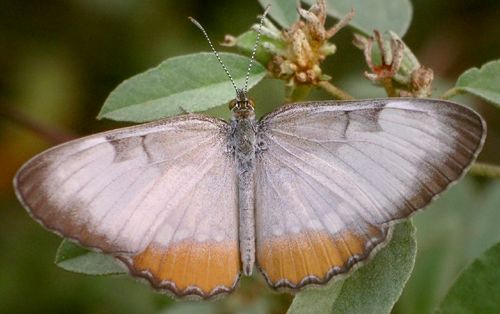by Valerie
September, 2014Common Mestra
Novice butterfly enthusiasts are often completely stumped when it comes to identifying the common mestra (Mestra amymone), as it doesn't look very much like other members of the family to which it belongs. Along with monarchs, painted ladies, and red admirals, the mestra is a nymphalid, albeit the only white and yellow one in our area. All our other yellow and/or white butterflies are in the family pieridae. This is a southern species and Austin, TX, is around the northern limit of its range. Although it does resemble unrelated white butterflies, the mestra is pretty easy to identify in the field. It rarely flies very high and tends to have a slow, halting sort of movement. It frequently lands after just a short flight, but it also spooks easily when approached. Its wings are fragile and usually have tears or bits missing. The caterpillar host plant is a horrid little weed called noseburn (Tragia urticifolia), a small, trailing kind of nettle. This plant is often present in tangled low growth and not easily seen. It is usually felt first, and, just like with its larger cousins, the spines on this nettle hurt! In spite of the physical dangers inherent in being near the plant, it is worth looking for the mestra caterpillar, which is a very spiky and ornately patterned larva. |